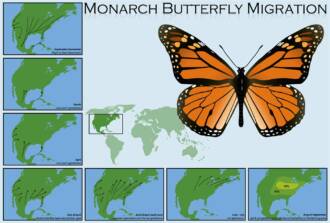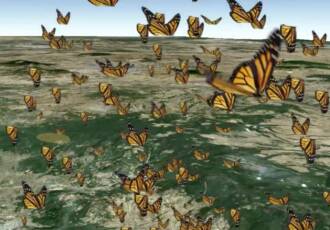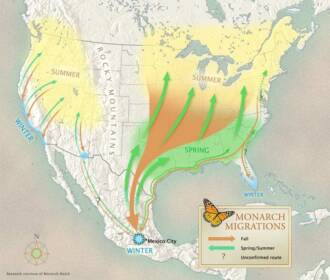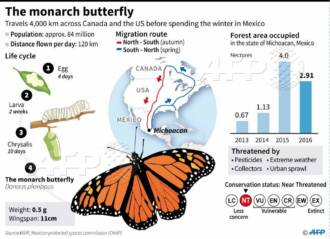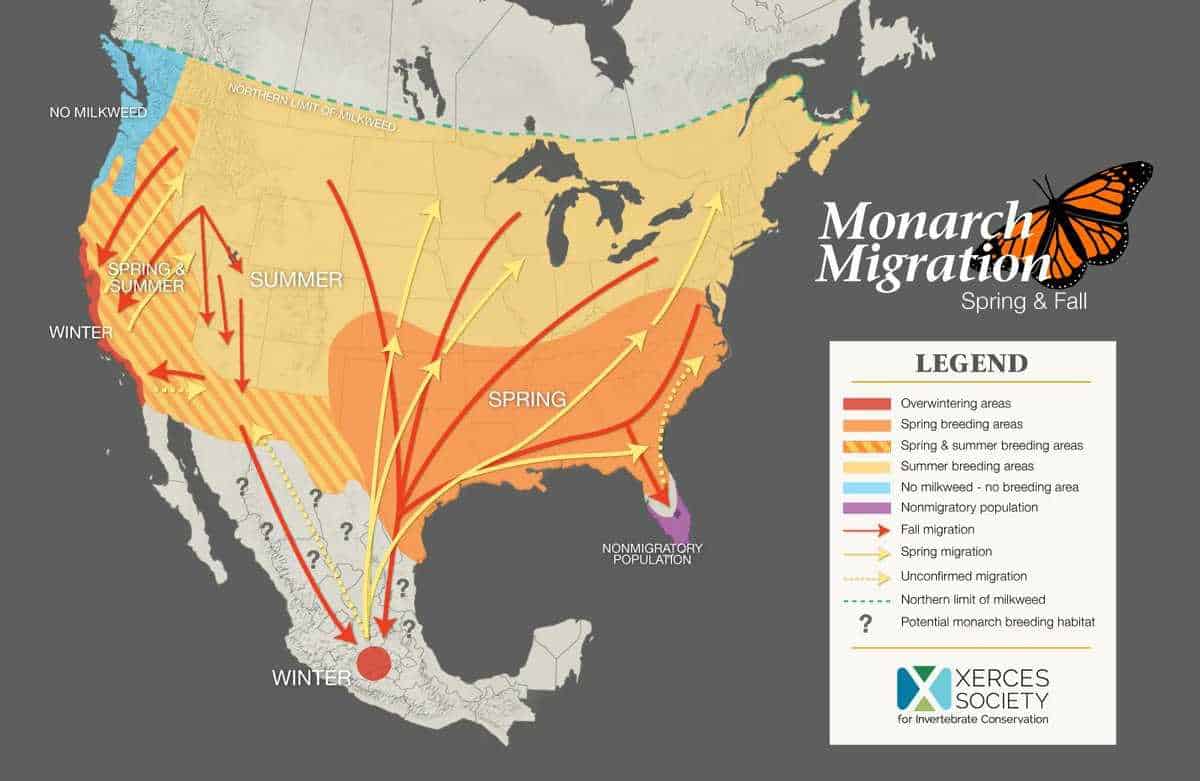
Butterfly migrations are one of the most mysterious and amazing phenomena in the world of wildlife. These gentle creatures are capable of traveling vast distances, crossing the borders of countries and continents in order to find a suitable place to reproduce and survive. During their travels, they use various mechanisms and strategies, which are still of great interest and study among scientists.
One of the most famous species of butterflies that migrate is the monarch. These colorful insects fly more than 4 thousand kilometers every year, overcoming obstacles and dangers. They begin their journey in North America and then fly to Mexico where they spend the winter. It is amazing that each generation of monarchs knows the exact place to fly to, despite the fact that not a single butterfly has been there before.
Butterfly migrations are not only a unique ability to cover distances, but also a magnificent spectacle. When thousands of winged creatures gather in huge flocks and fly in one direction, a unique spectacle is created. Their colorful wings shimmer in the sun, creating bizarre patterns and attracting the attention of everyone who is happy to watch this magical phenomenon.
Butterfly migrations are not only a unique ability to cover distances, but also a magnificent spectacle.
However, questions related to butterfly migrations still remain mysteries for scientists. How do they find their way? How do they manage to cover such long distances without getting lost? How do they choose a place to spend the winter? All these questions remain open and require further research and observation. Butterfly migrations are an amazing phenomenon that continues to amaze and capture our imagination. And perhaps in the future we will be able to uncover all the secrets of these mysterious journeys and learn even more about them.
The Mystery of Butterfly Migration: Exciting Journeys of Incredible Beauty
Amazing migrations
Butterfly migrations are one of the most amazing phenomena in nature. Every year, millions of butterflies travel vast distances, crossing mountains, rivers and even oceans. This is a truly breathtaking spectacle that attracts the attention of scientists and nature lovers.
Reasons for migration
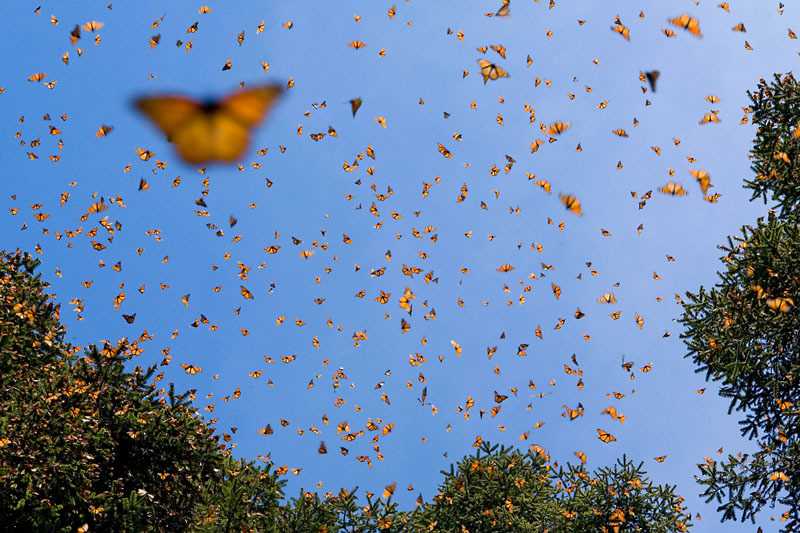
The main reason for butterfly migrations is the search for food and conditions for reproduction. Some butterfly species travel to find new food sources, such as flowers and nectar. Others migrate in order to find suitable places for laying eggs and developing caterpillars. Thus, migrations are an integral part of the life cycle of butterflies.
Incredible beauty
Butterfly migrations attract attention not only for their mystery, but also for their incredible beauty. Many species of butterflies have vibrant colors and varied patterns on their wings, making them truly magnificent creatures. During their migrations, they create a unique spectacle, filling the sky with bright dots of color and attracting attention with their beauty.
Species conservation

Butterfly migrations are an important aspect of preserving the diversity of living things. Studying migration allows scientists to better understand the mechanisms that allow butterflies to travel vast distances. This knowledge is important for developing measures to conserve and protect sites that are key to migration. Thus, studying the migrations of butterflies helps preserve their beauty and diversity in our world.
Why do butterflies migrate?

Butterfly migration is a fascinating phenomenon that leaves many questions. One of the reasons for butterfly migration may be the search for food. Butterflies, especially those that feed on flower nectar, may move in search of new food sources. When flowers in one area run out, butterflies begin their journey in search of new flowers.
In addition, butterfly migration is associated with changing seasons. Some butterfly species migrate long distances depending on the time of year. For example, monarch butterflies make an incredible journey from Canada and the United States to Mexico every year to escape cold winter conditions. They fly up to 4000 kilometers!
Also, butterfly migration may be associated with reproduction. Some species of butterflies migrate to specific places where they can find suitable conditions for breeding and laying eggs. They may then return to their original locations or remain in a new location until their descendants are ready to migrate.
In conclusion, butterfly migration is a complex and mysterious process that researchers are still studying. Butterflies migrate in search of food, avoiding unfavorable conditions and finding places to breed. This amazing phenomenon brings beauty and admiration, and helps us better understand nature and its secrets.
Amazing migration routes
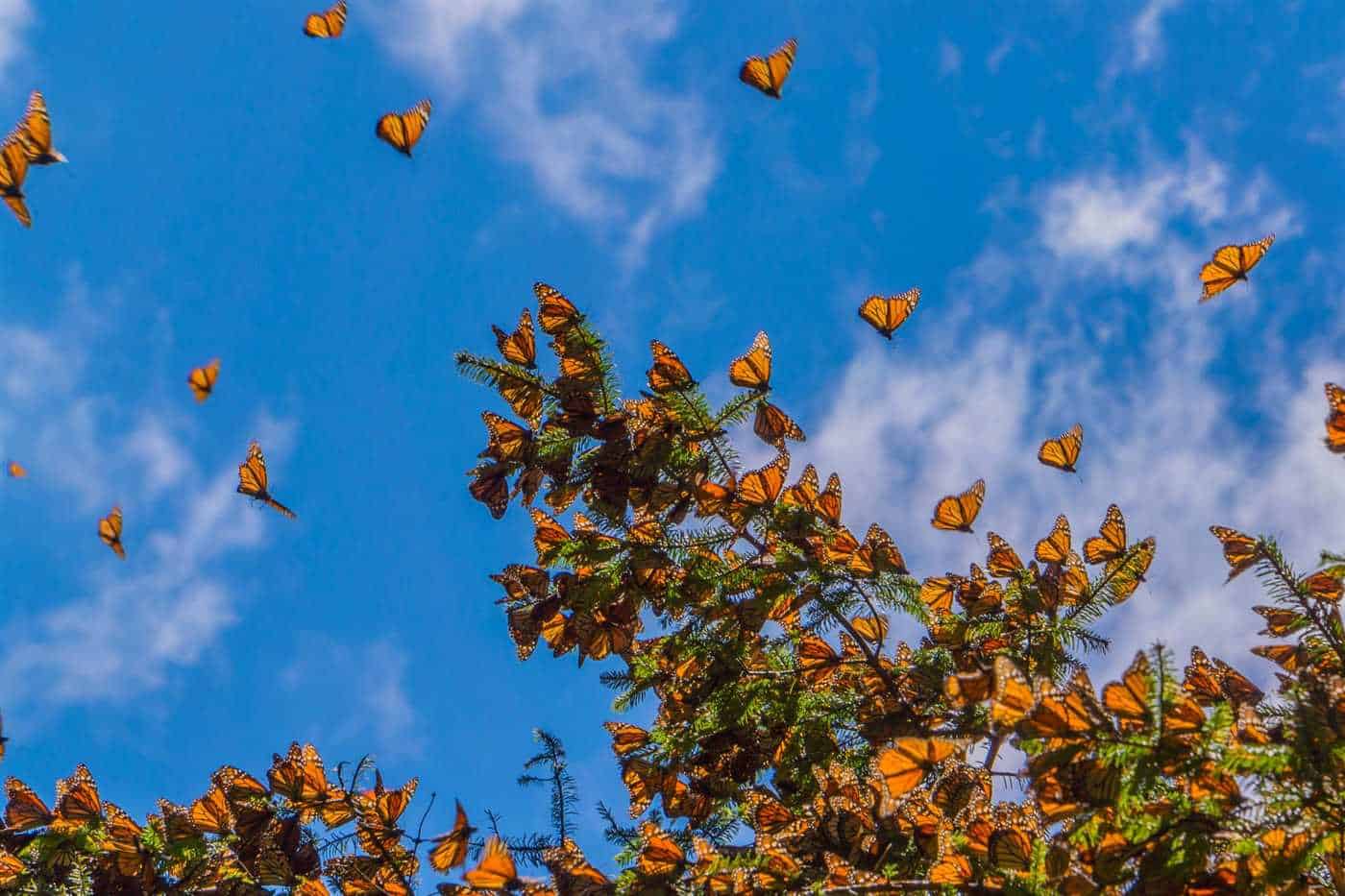
Butterfly migrations are one of the most amazing natural phenomena. Every year, millions of butterflies embark on long journeys, covering vast distances and overcoming obstacles to find suitable places to breed and find food.
One of the most amazing migration routes is the journey of monarchs. These beautiful butterflies travel from the northern regions of North America to the warmer regions of Mexico every year. They cover a distance of several thousand kilometers and along the way they encounter various obstacles, such as mountains and oceans. But this does not stop them - they continue their journey, using the wind and sun rays as guides.
Another amazing migration route is the journey of cabbage butterflies. These small butterflies travel from Central Asia to India and other warm countries. They travel vast distances, sometimes even more than 5,000 kilometers, to find suitable places to breed and search for food. During their journey, they pass through mountain ranges and deserts, and also cross rivers and oceans.
The amazing migration routes of butterflies are a real miracle of nature. They demonstrate high adaptability and the ability to overcome difficulties. These incredible journeys are a great show that delights and inspires us with their beauty and persistence.
How do butterflies find their way?
Butterfly migrations are an amazing phenomenon, and there are still many mysteries as to how they find their way. However, scientists have proposed several theories to explain this phenomenon.
1. Magnetic fields
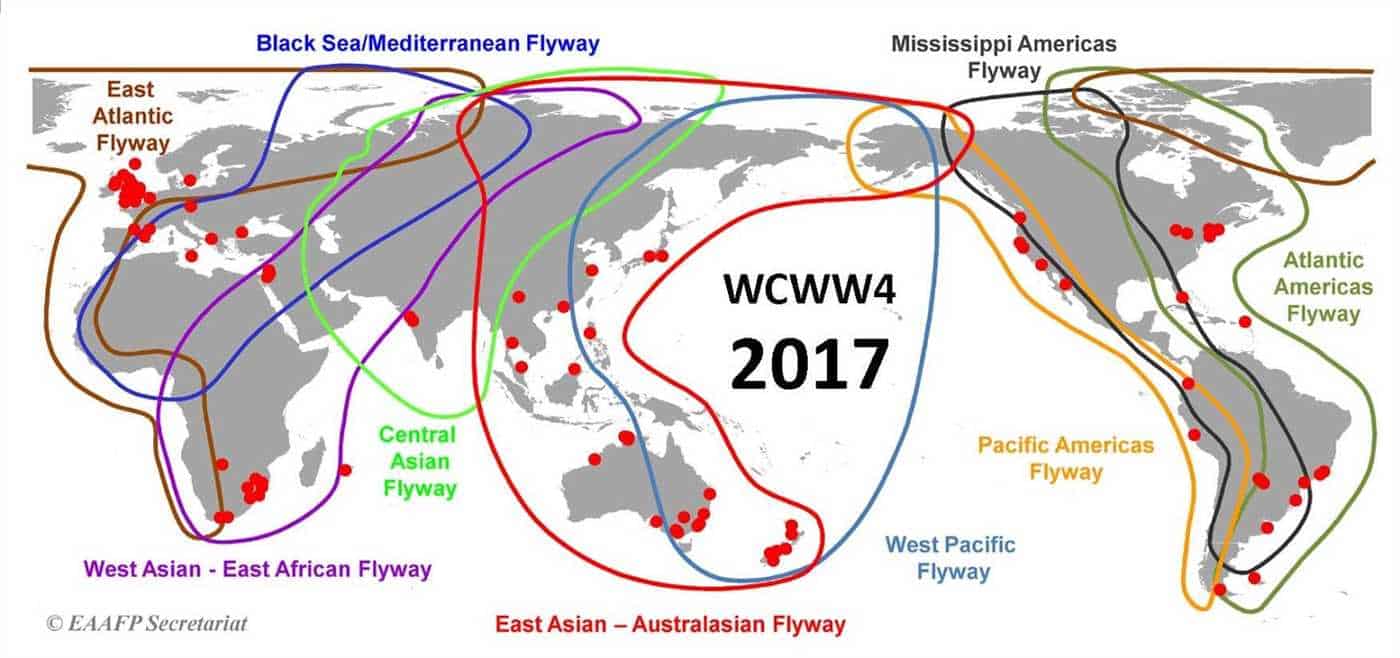
One theory suggests that butterflies use the Earth's magnetic fields to navigate. Research has shown that some species of butterflies have the ability to navigate using the Earth's magnetic field. They can use it in combination with sunlight and other landmarks to determine their location and direction.
2. Vision and orientation to the sun
Another theory suggests that butterflies use their vision and orientation to the sun to navigate. They can determine their location relative to the sun and use it as a guide to choose the right direction.
3. Chemical traces
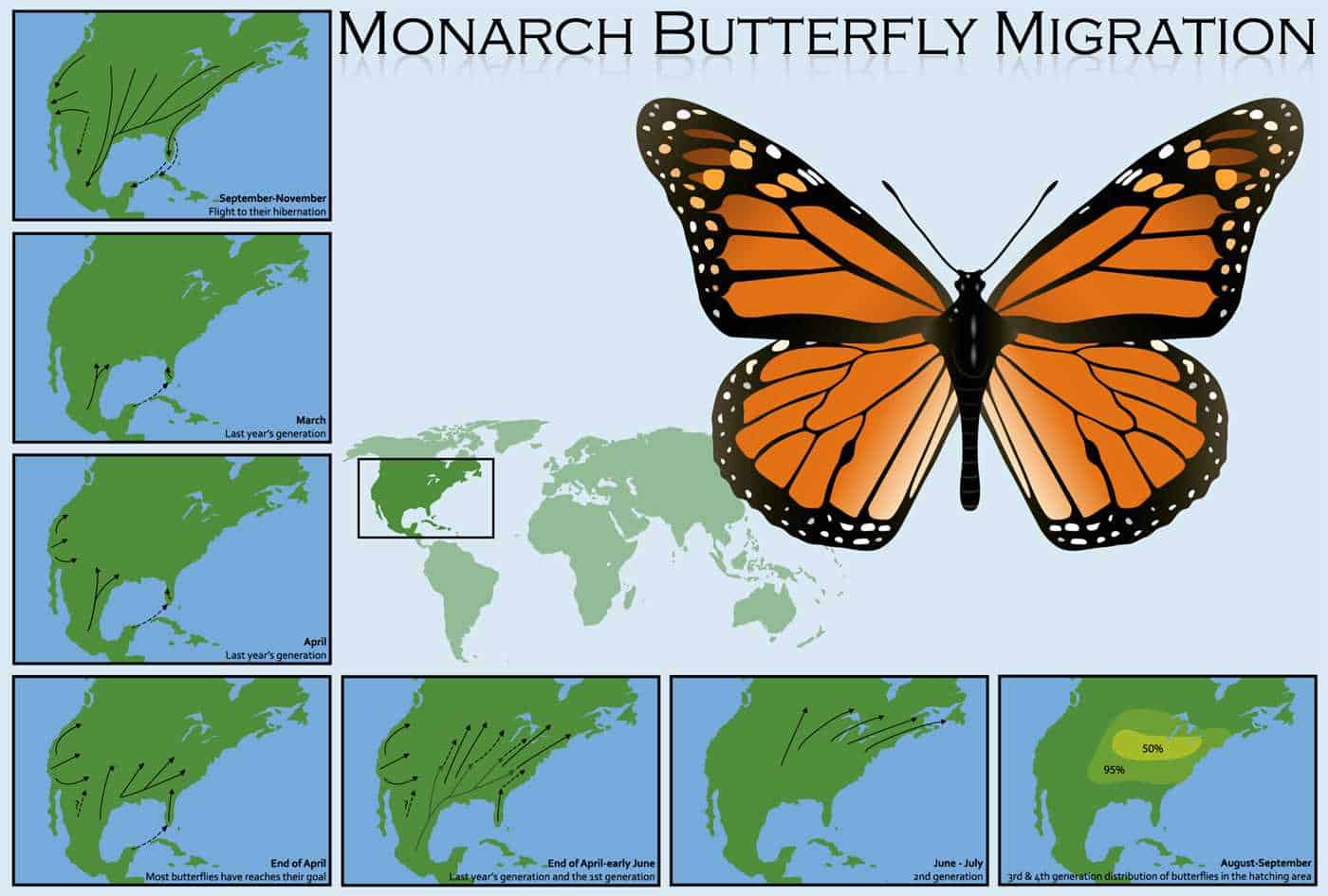
A third theory suggests that butterflies may use chemical trails left by other butterflies to navigate. Some species of butterflies can leave scent markers along their path that other butterflies can detect and use as landmarks.
It is possible that all of these theories play a role in butterfly navigation, and each applies to different species and situations. However, the exact mechanism by which butterflies find their way is still a mystery and further research is required to fully understand this phenomenon.
Migration records: stories of unusual journeys
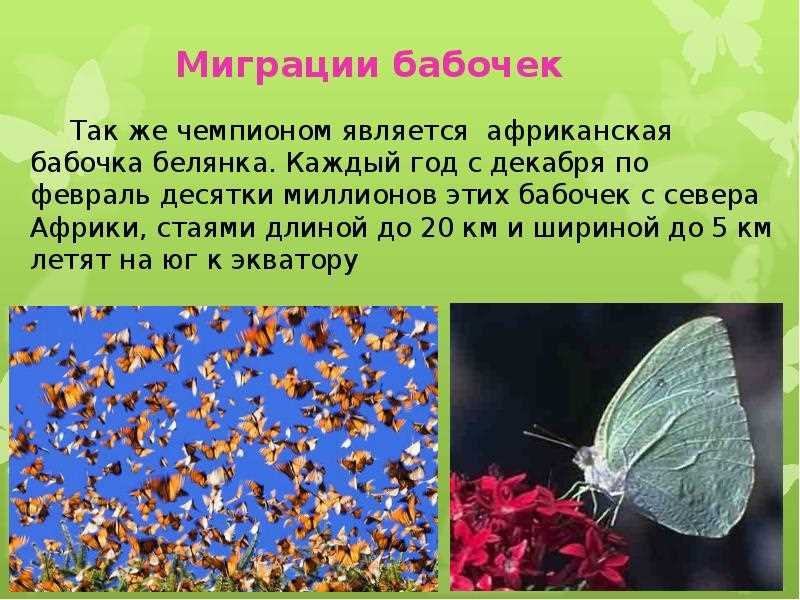
Migration is an amazing natural phenomenon, thanks to which many species of animals make long and dangerous journeys. Some of them set real records, amazing with their endurance and navigation abilities.
One of the most amazing migrations is the journey of a nomadic bird - the tundra swan. These birds spend the winter in warm regions, and in the summer they go to the northern regions to breed. Their path extends for thousands of kilometers, and they are able to fly even through the Arabian desert. Swans maintain the tradition of returning to the same nesting site where they hatched, and continue this ritual for several generations.
Migration records on land
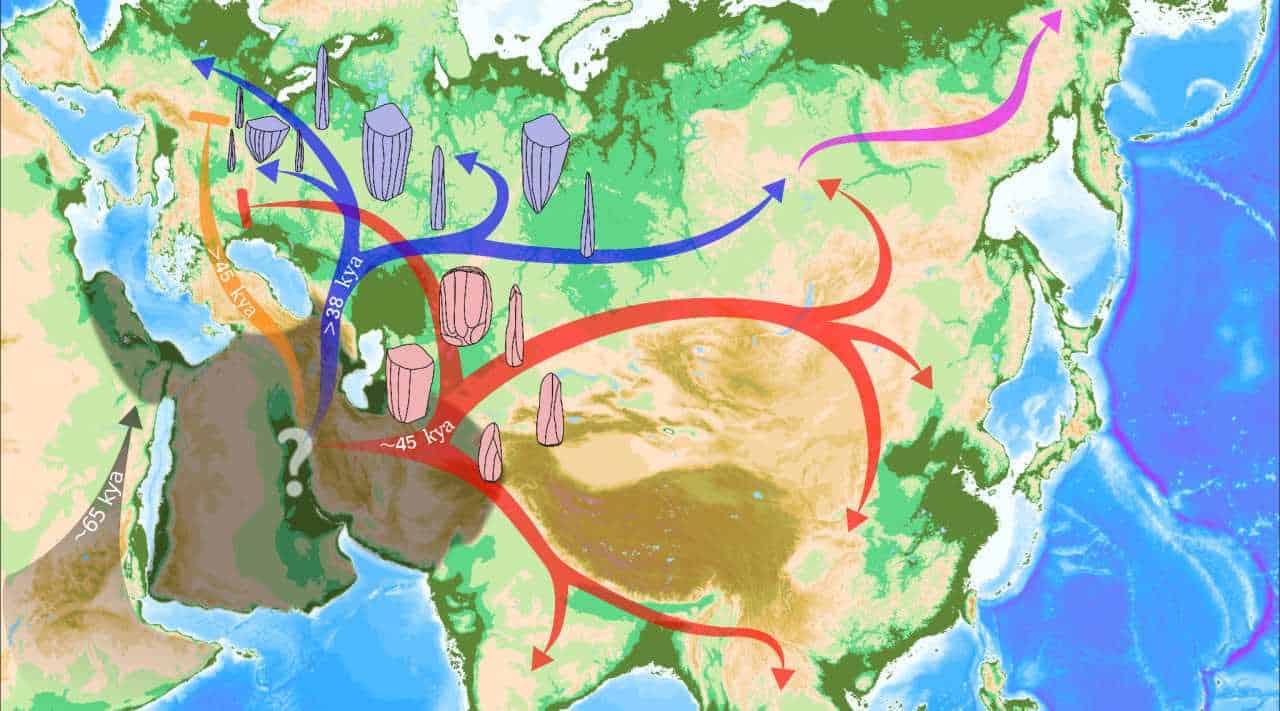
Not only birds, but also some mammals can travel vast distances in search of food or better conditions for reproduction. For example, The wildebeest manages to make the largest mass migration on the planet. These animals live in the steppes of Africa and make a circular journey every year, overcoming obstacles such as rivers and predators. The wildebeest can travel up to 1,500 kilometers in a few weeks, and their herds can number up to 1.5 million individuals.
Migrations in the world of insects
Insects are also known for their unusual migrations. For example, monarchs make the long journey from the USA and Canada to Mexico to spend the winter warm. These butterflies fly up to 4,500 kilometers, and their migration continues for several generations. They use a solar compass to navigate their way and find the right place to spend the winter.
Thus, the migration records of the animal kingdom provide amazing and fascinating stories of survival, adaptation and navigation. These journeys demonstrate the unrivaled abilities of animals and allow them to preserve their species for many generations.
Impact of climate change on butterfly migration
Butterfly migrations are a complex and fascinating phenomenon that can be greatly influenced by climate change. Butterflies migrate in search of favorable conditions for reproduction and survival, and climate change may significantly affect the availability of these conditions.
One of the main factors that influence butterfly migration is temperature. Changing temperatures can lead to shifts in habitat boundaries and changes in the distribution of resources needed for butterflies to reproduce. Some species of butterflies, for example, may be attracted to new areas where they have not previously been found due to climate change.
In addition, climate change may affect the availability of food resources for butterflies. Some butterfly species rely on certain plants as a food source for their caterpillars. If the plants they rely on become less available due to climate change, butterflies may be forced to find new food sources or change their migratory routes.
Climate change can also affect breeding conditions for butterflies. For example, changes in precipitation can lead to dry conditions that are unsuitable for the breeding of some butterfly species. Butterflies may be forced to find new breeding sites or change the timing of their migrations to adapt to changing conditions.
Overall, climate change could have major impacts on butterfly migrations. They can change migratory routes, availability of food resources and breeding conditions. Understanding these changes and their impact on butterflies may be important for developing strategies to conserve their species diversity and protect their migrations in the future.
Mysterious factors influencing the success of migrations
Butterfly migrations are an amazing phenomenon that still raises many questions among scientists. One of the main factors influencing the success of migrations is weather. Temperature, precipitation and wind can significantly affect the ability of butterflies to travel long distances.
In addition to weather, the availability of food also plays a role in the success of migrations. Butterflies migrate in search of specific plants on which they can lay eggs and feed. If these plants are not available along the migration route, the butterflies may encounter problems and be unable to continue their journey.
Another mysterious factor influencing the success of migrations is the internal compass of butterflies. Scientists still do not fully understand how butterflies navigate space and find their way. It is believed that they use the sun, the Earth's magnetic field and smells to navigate, but the mechanisms of this process remain a mystery.
Also, the butterfly community plays an important role in the success of migrations. They migrate in large colonies, and moving together helps them protect themselves from predators and find additional food sources. When butterflies migrate together, it increases their chances of survival and successful completion of their journey.
Protecting migration routes: the role of the population and organizations
Butterfly migration is an amazing natural phenomenon that requires protection and preservation of their migration routes. Both the population and various organizations involved in nature conservation play a role in this process.
Contribution of the population
The population is of great importance in protecting the migratory routes of butterflies. People can help by creating and maintaining environmentally friendly areas rich in vegetation that provide food sources and living space for butterflies. In addition, people can influence policy decisions aimed at conserving natural areas and reserves that are important migratory points for butterflies.
The public can also take part in butterfly research and monitoring to learn more about their migration patterns and behavior. This will help to more effectively protect their routes and take the necessary measures to preserve butterfly populations.
Role of organizations
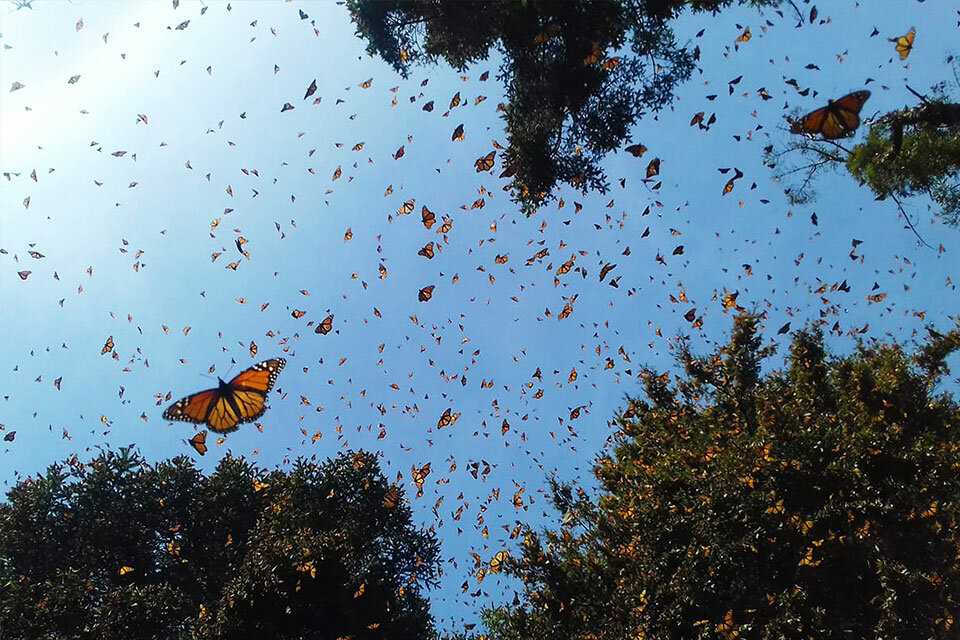
Conservation organizations also play an important role in protecting butterfly migration routes. They conduct scientific research, develop conservation programs and educational activities that are aimed at preserving and restoring butterfly habitats.
In addition, organizations can work with government and international conservation bodies to make butterfly migration routes a conservation priority. They can also conduct public awareness campaigns about the importance of butterfly migration and raise awareness of threats to butterfly routes.
Overall, collaboration between communities and organizations is key to protecting butterfly migration routes. Only through joint efforts can we ensure the conservation of this amazing natural phenomenon and preserve the beauty and diversity of butterflies in our world.


